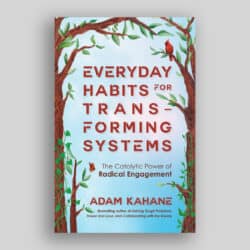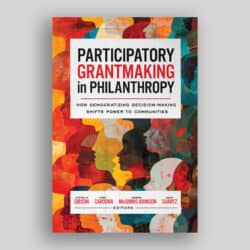Edited by Allan Arlett and Ingrid Van Rotterdam, Published by The Canadian Centre for Philanthropy, Toronto, 1985, 27 4 pp., (price list at end of review)
REVIEWED BY JOHN MABLEY
Assistant Vice-President for Development, Dalhousie University
Like previous editions, the sixth edition of the Canadian Directory to Foundations will serve as the standard reference source on Canadian charitable foundations.
The first edition entitled Guide to Foundations and Granting Agencies was published in 1966 under the aegis of the Association of Universities and Colleges of Canada (AUCC). Beginning with the fifth edition of the Directory in 1982, responsibility for publication shifted to The Canadian Centre for Philanthropy, which had been established under the Directory’s senior editor, Allan Arlett. Arlett had accepted the invitation of the AUCC to take a hand in the organization of the Directory in the 1970’s while he was employed as an institutional advancement officer in New York State, first with Clarkson College and then with the City University ofNew York. Previously he had held fund-raising and alumni-affairs positions with the University of Toronto and Carleton University in Canada. The Canadian Directory to Foundations reflects both Arlett’s extensive experience as a fund raiser and his familiarity with the excellent directories of the Foundation Center of New York.
It is a tribute to Arlett’s presentation and the calibre of his material through successive editions of the Directory that numerous Canadian charitable organizations have learned to rely on its readily accessible information. How many financially pressed charities, I wonder, have turned in desperation to the Directory with the confidence that certain relief lay within its well-ordered pages? Arlett and his co-editor for the sixth edition, Centre For Philanthropy colleague Ingrid van Rotterdam, know their audience. Like earlier volumes, the Introduction to the sixth edition cautions that, “An effective foundation program like most good operations, requires long term planning … the ability to write an effective proposal can be acquired through practice and hard work.”It is to be hoped this good advice is penetrating the grant-seeking community although my own experience with university teachers and researchers who discover the Directory leads me to suspect that this may be more a future, than a present, outcome.
The Directory’s most useful benefit to grant seekers is an annotated alphabetical listing of 653 charitable foundations located in Canada. There is also a short list of selected United States-based foundations which are known to consider grants to Canadian charities. The list of Canadian foundations in this edition contains 58 more entries than were reported in the fifth edition and 389 more than were reported in the fourth edition, which was published only seven years ago. Clearly there has been an extraordinary improvement in research techniques and information gathering. That this improvement is needed and important is plainly reflected in the financial impact foundations now have on giving in Canada. In this edition of the Directory they have reported grants totalling almost $179 million in 1983.
Successive editions of the Directory to Foundations have not always enjoyed the total support and co-operation of the foundation community. Occasional vagueness in foundations’ reporting of their particular interests persists even in the very well detailed sixth edition and suggests that readers can look forward to further refinements in future editions.
Nevertheless, it is significant that some of this country’s most influential foundations have been key supporters for the development of the Directory which most informed observers would, I believe, identify as the most compelling initiative in recent years for improving channels of communication between grant givers and grant seekers. The McLean Foundation, The Richard lvey Foundation, the Physicians’ Services Incorporated Foundation, The Windsor Foundation, the Leon and Thea Koerner Foundation and the Winspear Foundation have all supported the development of the Directory.
The editors acknowledge their debt to the Foundation Center in New York and its importance as a model for the development of an information base for the Canadian Directory. In fact, the presentation of entries in the current edition of the Canadian Directory to Foundations is virtually indistinguishable from reporting in the Foundation Center’s Foundation Directory (over 3,000 entries for active U.S. foundations). Each foundation is boldly identified in alphabetical order and most entries include the date of establishment, purpose, interests, geographic scope, grant information, financial data and officers and directors.
An advantage enjoyed by the United States editors which was not so easily available to Arlett and van Rotterdam is ready access to information. Regular reporting not only to government but also to the public is more characteristic of American foundations than their Canadian counterparts. That so much more information is available in the United States is primarily due to a public uproar in the fifties over real and imagined abuses and consequent legislative action. In order to avoid the necessity for similar drastic government action in this country The Centre For Philanthropy works in the Canadian style, cautiously and methodically, coaxing voluntary disclosures from foundations.It would appear from this Directory that the foundation community is becoming more receptive to the Centre’s approach.
The preface to this issue includes an updated review of disbursement rules for Canadian foundations by Arthur Bond of the PSI Foundation, a director of the Centre. Bond’s review is extremely informative, particularly since he clearly presents and dates the sequence of actions which led to the new tax rules for charities which were announced last year.
A feature of the American Directory to Foundations not found in the Canadian Directory is a stronger analysis of trends, including a report on the distribution of grants by subject categories, and the effect of inflation on foundation assets. This research would be of value to grantors, grant seekers, and all who are concerned with the vitality of philanthropy in Canada, especially in the face of evidence that suggests philanthropic giving is declining. The need for information is acute.
The Canadian Directory to Foundations can be obtained (prepaid) from: The Canadian Centre for Philanthropy 3080 Yonge Street, Suite 4080
Toronto M4N 3Nl
The Board Member’s Book: Making A Difference in Voluntary Organizations by Brian O’Connell, Published by The Foundation Center, New York, 1985, pp. 208, $16.95 (U.S.)
REVIEWED BY EDWARD J. WAlTZER
Member, The Ontario Bar and Director, The Agora Foundation
Lawyers who serve on, or advise, boards of directors are continually called upon to discuss the nature of directors’ responsibilities. Each of us has our favourite articles or other guides which, with the benefit of our own ceremonial introduction, we regularly circulate.
This focus on the legal obligations of directors is, in many respects, an unfortunate one. The concept of a board of directors is one which emerged from organizational logic, rather than legal necessity. All too often, the legal perspective places undue emphasis on form rather than on the practical realities of achieving the organization’s objectives. Lawyers (and law makers) tend to be preoccupied with avoiding (or imposing) liabilities. Accordingly, corporate
statutes and legal advice focus on how directors should conduct themselves (i.e., standards of prudence, good faith and loyalty) rather than what they should be achieving.
Perhaps because his wealth of experience and wisdom is untainted by legal training, Brian O’Connell has transcended the usual bounds of a directors’ guidebook. In The Board Member’s Book, he takes a subject which most would consider dry, at best, and infuses it with the very level of enthusiasm that motivates people (such as himself) to assume responsibility in voluntary organizations. In doing so, he provides the reader with a wealth of insight into what makes voluntary organizations tick. His presentation is well organized, informative and, at times, inspirational.
O’Connell is presidentoflndependent Sector, a national coalition of voluntary organizations, foundations and corporations which seeks to preserve and enhance the traditions of giving, volunteering and not-for-profit initiative in the United States. He shares with his readers, in a clear and thoughtful manner, his personal experience as well as information which he has gleaned from an exhaustive review of the literature (the book supplies interested readers with a detailed bibliography) of how the effectiveness of voluntary organizations can be enhanced through strong leadership and purposeful organizational practices. The book focuses on practical results rather than cosmetic expectations. Subjects considered range from recruitment and fund raising to less obvious, but equally important, issues such as setting priorities and working with professional staff.
Experienced board members will recognize many of the pitfalls of which O’Connell warns, while more recent volunteers will appreciate the clear and reasoned guidance.
One of the stumbling blocks of which O’Connell warns is the propensity for organizations to become occupied with committee structure, procedures and lines of authority to the point where the organization ends up serving its structure, rather than its mission. O’Connell himself may have slipped into this trap in a chapter which is intended to demystify Robert’s Rules of Order. This one lapse (which could easily have been cured by relegating some of the detail to an appendix) is the only flaw in a book that is otherwise approachable.
Near the beginning of The Board Member’s Book, O’Connell considers the similarities and differences in responsibilities between directors in profit and nonprofit corporations. He quotes Kenneth N. Dayton, former chief executive officer ofDayton Hudson and consummate volunteer, whose experience is, that it is often on the non-profit side that boards take their responsibilities most seriously. While this conclusion may run counter to the intuition of many, it is not surprising when one thinks of the differing factors which motivate service on profit and non-profit boards and the importance of directors to the success of the respective institutions. The Board Member’s Book does ample justice to the commitment which informs most voluntary directors. It is that commitment which should lead to a wide and appreciative audience for O’Connell’s effort.
This book may be obtained for $16.95 (prepaid, U.S. funds) from:
The Foundation Center 79 Fifth Avenue New York City, NY U.S.A. 10003
A Guide For Church Treasurers, by R.C. Knechtel, C.A., R.l.A., Published by Clarkson Gordon, Toronto, June, 1985 pp. 96 and supplemented by various appendices, $10
REVIEWED BY CATHERINE E.L. McMASTER
Chartered Accountant and Associate Treasurer, St. Andrew’s Church, Toronto
A Guide For Church Treasurers contains general, administrative and technical information which every church treasurer should have. It will be an excellent reference that will assist church treasurers and other church officials to comply with reporting and other requirements under the Income Tax Act since substantial changes in the laws affecting charities occurred in 1984 and these changes necessitate a thorough review of a charity’s status and operations. While the book is directed to church treasurers it will also be of assistance to treasurers and officers of other charities.
Knechtel is knowledgeable with respect to the challenges a church treasurer may encounter. He is a leading authority on the problems and responsibilities of church treasurers and has presented a number of seminars to church groups across the country. In a number of articles and several speeches he has addressed the operational issues arising from the taxation of charities.
The 1984 changes in the Income Tax Act which establish different treatment for charities depending on whether they are classified as charitable organizations, public foundations, or private foundations, are of particular interest to churches since, although they are normally classed as charitable organizations, they can in some cases be either public or private foundations. Knechtel provides the detailed information churches will require if they are to order their affairs for maximum advantage under the new regulations.
The book also sets out the basic rules a church is required to follow, including such items as the disbursement quota, receipting of charitable donations, and filing of tax information. He addresses many issues that church treasurers may have to contend with such as: the treatment oflove offerings, monies given to an independent missionary, related businesses, fund-raising activities, amounts paid for religious instruction, fees paid to a non-resident of Canada, and the general and specific tax treatment of income and deductions available to those employed in the ministry. The detailed information is sometimes very technical because the regulations are complex and the consequences of misunderstanding or ignoring them can be serious (e.g., deregistration).
Knechtel also describes a simple accounting and reporting format for a church. Details outlining how the system and records should be arranged and sample forms and statements are provided. Most churches must operate with limited budgets and staff. The book provides some practical procedures which will enable a church to minimize weaknesses in internal control and make the preparation of accurate current financial information easier.
A Guide For Church Treasurers is a well organized and comprehensive guide for church treasurers and other church officials. In this one publication they will find: details about a charity’s income tax issues, answers to specific churchrelated problems, and basic reference material including Revenue Canada forms and publications.
One word of warning: both the income tax laws and Revenue Canada’s interpretation and administration of them are subject to change. This book should be a supplement to, not a substitute for, professional advice.
A Guide For Church Treasurers is available for $10 plus $5 for handling and mailing (prepaid) from:
Clarkson Gordon, Chartered Accountants P.O. Box 251, Toronto Dominion Centre Toronto, Ontario, M5K 1J7


